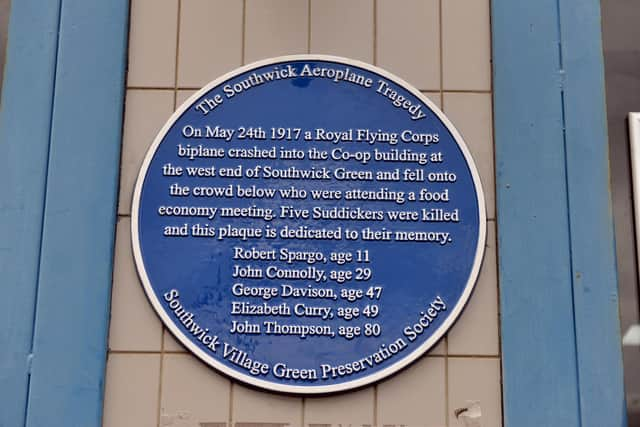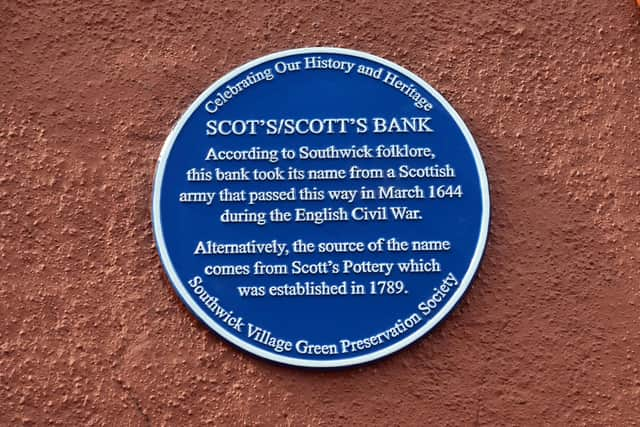Blue plaque remembers the Southwick plane tragedy which claimed five lives
and live on Freeview channel 276
Nationally-recognised markers of sites of historic significance, the blue plaques have been installed at Scots Bank and on the Southwick Superstore and post office.
The latter plaque marks a tragedy which scarred the close-knit community when, in 1917, a Royal Flying Corps bi-plane crashed into the Co-op building at the side of the Green, killing five people. The youngest victim was just 11-years-old.
Advertisement
Hide AdAdvertisement
Hide AdEight more were injured in the tragedy which saw the plane hit a large group of people who’d gathered on the west end of the Green for a food economy meeting.


Peter Gibson, chairman of the Southwick Village Green Preservation Society who are leading the project to honour the village’s history, has been researching the disaster since the 1980s through Sunderland Echo reports and eye witness accounts.
He said: “There’s rumours that the plane had been arranged to attract people to the meeting, as it was a real spectacle to see a bi-plane in those days, but that was always denied.
"The pilot, Lieutenant Phillip Thompson, had set off from RAF Usworth that night and flew over the crowd twice, who were so in awe of the sight that the meeting had to be stopped. He flew over once and then went out to sea to test a gun, when he came back for the second time the sun was low in the sky and he didn’t see a 56ft flagstaff.
Advertisement
Hide AdAdvertisement
Hide Ad"He hit it, which knocked the wing off causing the plane to go in to a side spin as he lost control. The first person he hit was 11-year-old Robert Spargo who’d been sitting on a post box. He was virtually decapitated.”


Remarkably, the pilot walked away from the crash uninjured but was killed on the Western Front 10 months later.
The other new plaque marks the two spellings of Scots / Scott’s Bank and its importance as a throughfare in the village. There’s two interpretations of the name. Folklore says that it was known as Scots Bank after a Scottish Army who passed through the ancient village in March 1644 during the English Civil War.
The other interpretation of the name is that it is Scott’s Bank after Scott’s Pottery which was established in 1789.
Advertisement
Hide AdAdvertisement
Hide AdPeter said: "Southwick’s history has been neglected for way too long. Other places in the city, such as Hendon have a well recorded heritage with blue plaques and interpretive panels and we wanted to do something for Southwick.”


The group has also been leading litter picks and planting on the Green to improve its appearance.
Peter said: “Southwick is a gateway to North Sunderland, thousands of people pass the Green every day on buses and commuting and it’s only right that it should be tidied up.”
Other plaques installed as part of the development of a blue plaque heritage trail include those at Stoney Lane, the Southwick Neighbourhood Youth Project (SNYP) building in Southwick Road, a plaque to honour the fallen at The Green Bean cafe and on the Times Inn pub to honour Suddicker Sir William Mills who invented the hand grenade, with more planned.
